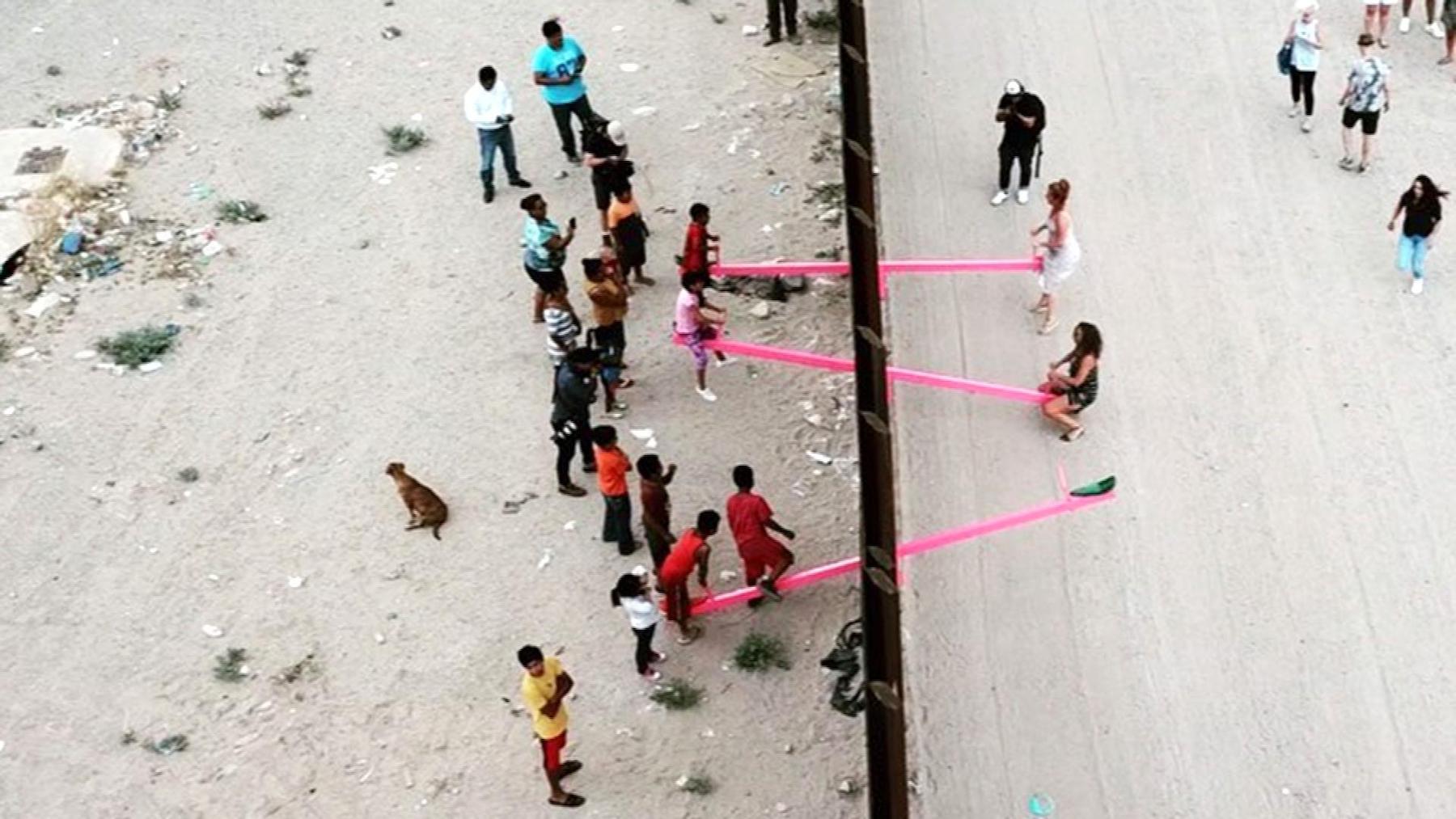Two professors have installed three seesaws hinged on a section of border fence separating the U.S. and Mexico. Children in Sunland Park, New Mexico, have been photographed climbing onto the fluorescent pink playground objects and interacting with their peers in Ciudad Juárez, Mexico, through the fence’s steel slats.
The installation, named the “Teetertotter Wall,” was created by Californians Ronald Rael, professor of architecture at the University of California, Berkeley, and Virginia San Fratello, an associate professor of design at San José State University. The duo first thought of the trans-border piece in 2009 as a way for the two countries to playfully interact in a way that still recognized “that the actions that take place on one side have a direct consequence on the other side.”
The “Teetertotter Wall” comes after three years of hard campaigning by President Donald Trump to radically restrict immigration, both legal and illegal, into the United States, particularly from Central and South American nations—a campaign that includes promises to build a solid wall clear across the country’s southern border with Mexico. Earlier this month, the president was cleared to use Defense Department funds to build sections of his that still unbuilt wall. To date, his related policies have seen over 900 undocumented children crossing into the United States separated from from their parents and held in often dangerous conditions.
Artists before Rael and Fratello have similarly used parts of the existent border fence to comment on the ongoing tumult surrounding the Trump Administration’s immigration policies and children and adults alike have long used it to play volleyball—here called “wallyball”—across the border.

